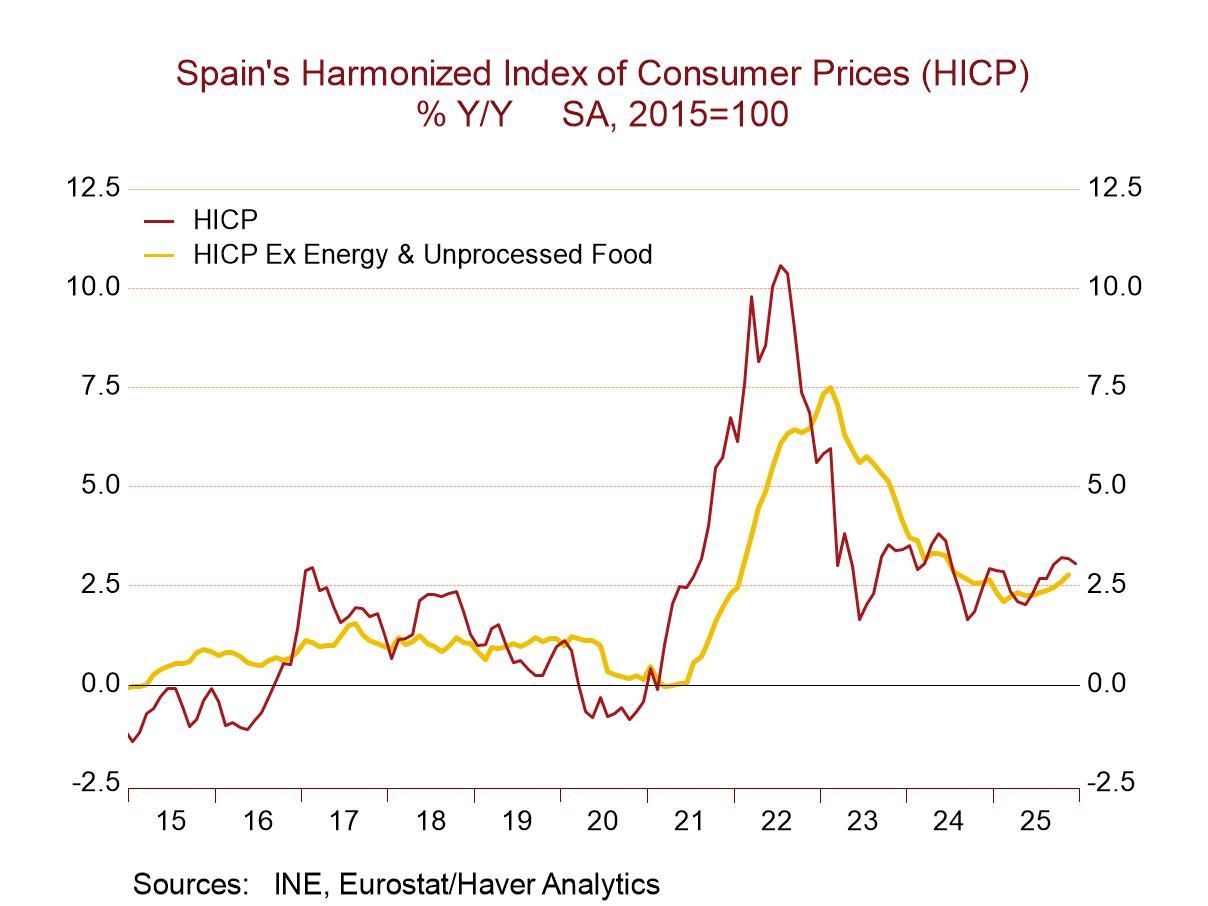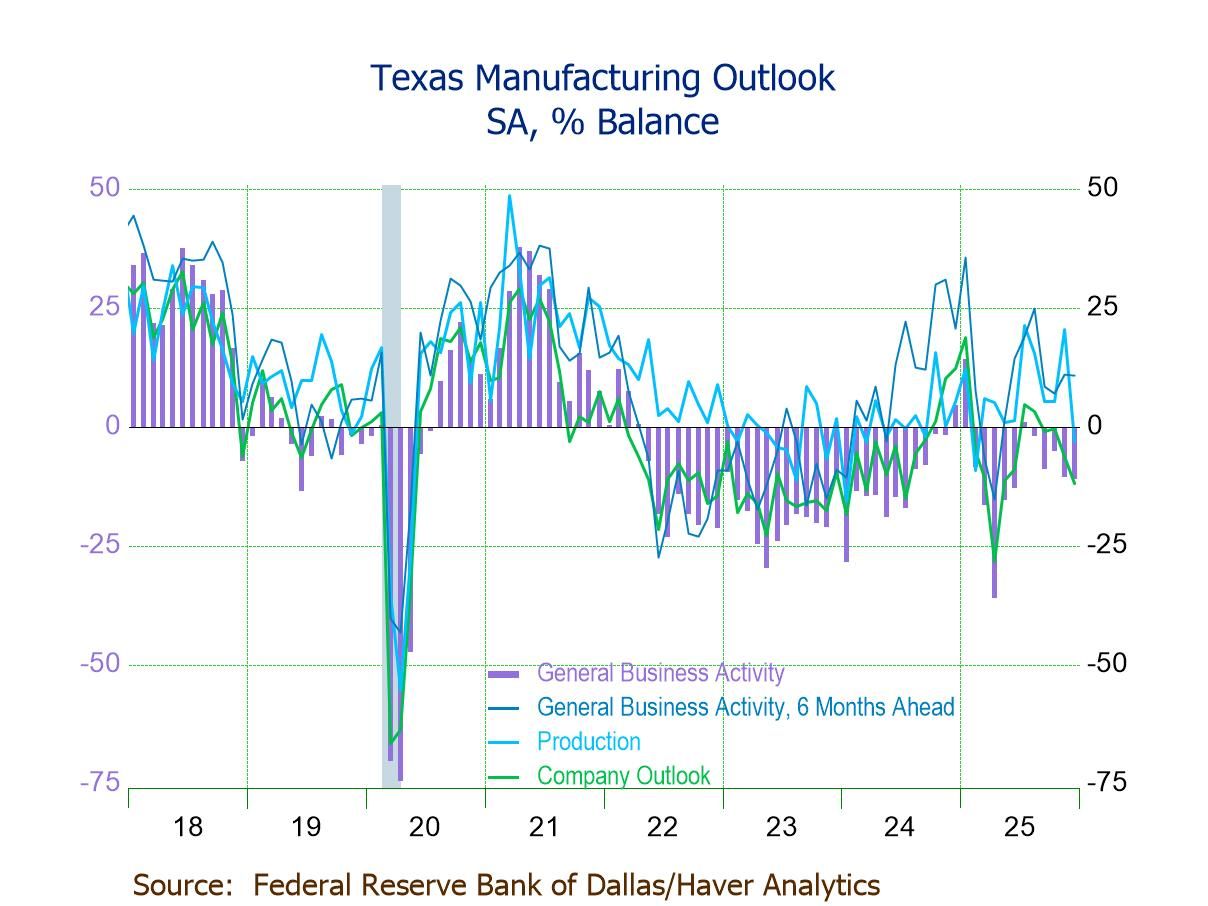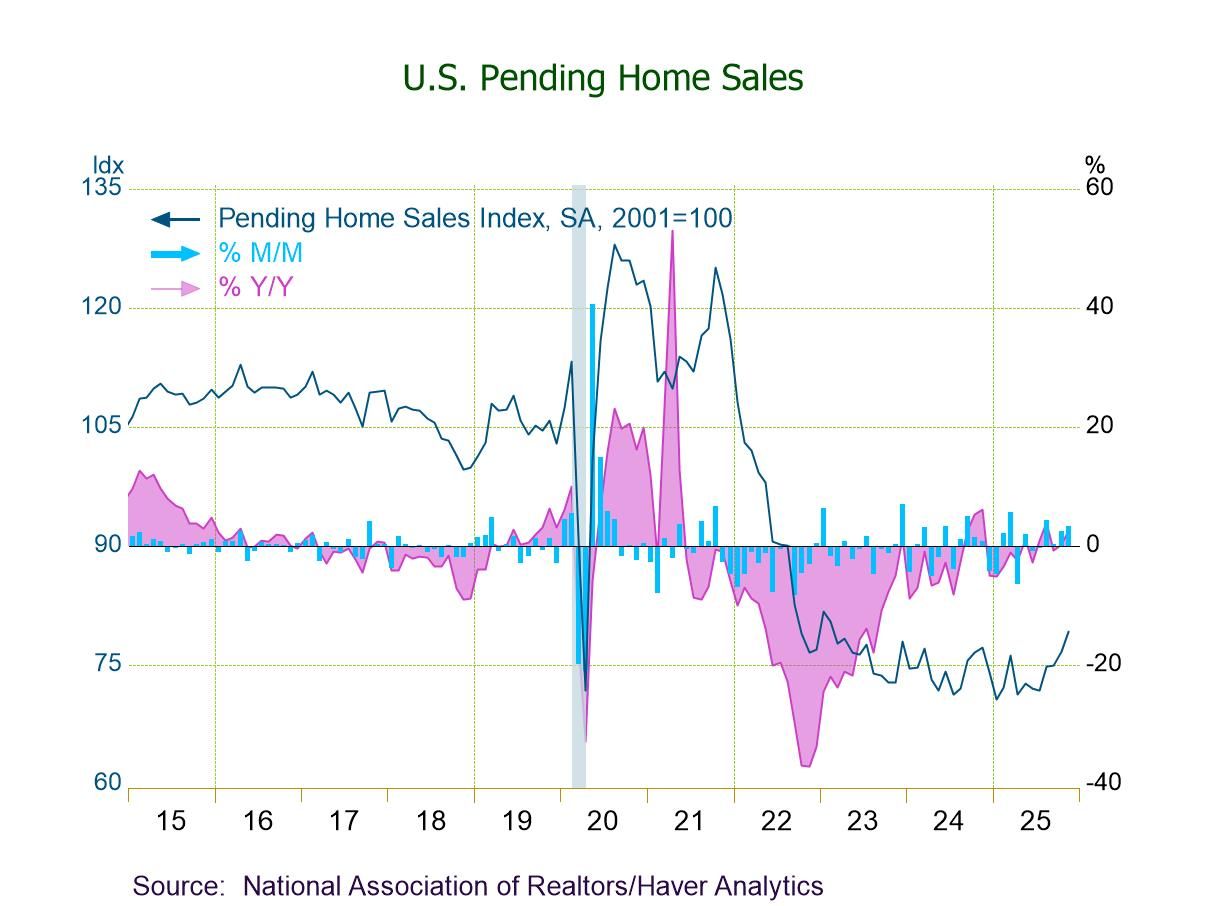 Global| May 23 2024
Global| May 23 2024Charts of the Week: The Chips Are Up Again
by:Andrew Cates
|in:Economy in Brief
Summary
In the absence of top-tier economic data, corporate earnings reports, particularly from the technology sector, have played a crucial role in shaping financial market sentiment over the past few days. And some very impressive revenue gains for companies that are producing AI-friendly semiconductors certainly have some macroeconomic parallels, as we illustrate in our charts this week via the equally impressive growth in South Korea’s semiconductor exports (see chart 1). Another noteworthy trend this week is the recent sharp decline in measures of European policy uncertainty (see Chart 2), which may have contributed to the recent improvement in UK economic data (see Chart 3). The improving economic data and the series of positive surprises within the UK might have factored into the timing of the Prime Minister Sunak’s decision to call an election on 4th July. However, persistent UK service sector inflation remains a challenge, as highlighted by the latest CPI report for April (see Chart 4). Additionally this week, we note the sharp rise in copper prices in recent weeks, a trend potentially linked to the rollout of AI technology, though supply-side disruptions are an equally likely cause. The green energy transition could also be impacting copper demand, which chimes with some data on renewable energy sources in our final exhibit this week (see Chart 6).
South Korean trade Data this week for South Korea’s trade revealed that exports have continued to grow at a double-digit clip. Specifically the value of export shipments, adjusted for working-day differences, increased by 17.7% y/y in the first 20 days of May. One reason for this growth is rooted in the demand for semiconductors, which climbed by 45.5% y/y, and likely driven, in part, by the global AI transition.
Chart 1: South Korean trade: First 20 Days of the month

Global uncertainty A gauge of European economic policy uncertainty has declined sharply over the past few weeks, as evidenced in chart 2 below. Since early 2022, when Russia invaded Ukraine, European policy uncertainty has been significantly higher than that of the US. However, the steep decline in European uncertainty since the start of 2024 is noteworthy, especially when viewed against more stable, albeit still lower, levels of US uncertainty.
Chart 2: EU and US economic policy uncertainty indexes

US and UK growth surprises An improving macroeconomic backdrop may have been one factor that’s been influenced by – and contributed to – this improvement. Incoming data from Europe have elicited positive surprises in recent weeks, for example, and particularly in the UK. The improving economic data and the series of positive surprises within the UK might have factored into the timing of Prime Minister Sunak’s decision to call an election on 4th July. That stands in vivid contrast to the US where incoming data have elicited negative surprises (see chart 3).
Chart 3: Citigroup: UK and US growth surprise index

UK inflation One issue for the UK's economic outlook is inflation, particularly the persistently high levels of service sector inflation. Services inflation, a critical indicator for Bank of England (BoE) policymakers, specifically dropped from 6% year-on-year in March to 5.9% in April. However, many UK forecasters had expected a larger decline. A deeper analysis reveals that one reason for the stubbornly high inflation in this sector is the housing services component (see chart 4). Significant increases in housing rents, in particular, have fueled inflation in this sector. Many observers of the UK housing market argue that some of this, but by no means all, has been driven by higher mortgage interest rates and the broader tightening of UK monetary policy over the past couple of years.
Chart 4: UK CPI inflation: Goods and services breakdown

Copper prices Copper prices have risen very sharply over the past 3 months due to a combination of supply disruption and increased demand. On the supply side, several major copper-producing regions have faced significant issues including key mines in countries such as Chile and Peru. But the demand for copper has also surged due to its critical role in the green energy transition and the roll-out of AI infrastructure (e.g. energy storage systems).
Chart 5: Copper prices versus global growth surprises

Renewable energy Copper’s role as a key commodity for the clean energy transition is a neat segue to our final exhibit this week, namely the share of renewable energy in the electricity capacity of the world’s major regions. As chart 6 below indicates, the global share of renewable energy in electricity capacity has shown a steady increase from around 27% in 2013 to approximately 43% in 2023. That reflects the worldwide effort to transition towards more sustainable energy sources and reduce carbon emissions. Europe shows the most pronounced increase, starting from about 38% in 2013 and reaching nearly 57% in 2023. The European Union's strong commitment to climate goals, coupled with extensive subsidies and regulatory frameworks favoring renewable energy, are key factors that have driven this growth.
Chart 6: Renewable energy share of electricity capacity by region

Andrew Cates
AuthorMore in Author Profile »Andy Cates joined Haver Analytics as a Senior Economist in 2020. Andy has more than 25 years of experience forecasting the global economic outlook and in assessing the implications for policy settings and financial markets. He has held various senior positions in London in a number of Investment Banks including as Head of Developed Markets Economics at Nomura and as Chief Eurozone Economist at RBS. These followed a spell of 21 years as Senior International Economist at UBS, 5 of which were spent in Singapore. Prior to his time in financial services Andy was a UK economist at HM Treasury in London holding positions in the domestic forecasting and macroeconomic modelling units. He has a BA in Economics from the University of York and an MSc in Economics and Econometrics from the University of Southampton.






